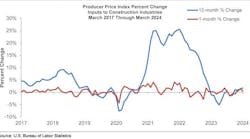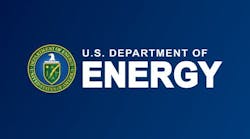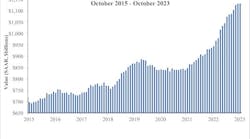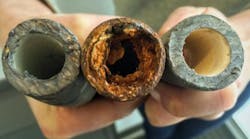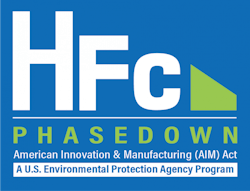PRESS RELEASE
WASHINGTON, October 6, 2023 – Today, the U.S. Environmental Protection Agency (EPA) announced the latest actions to phase down climate-damaging hydrofluorocarbons (HFCs) under the bipartisan American Innovation and Manufacturing (AIM) Act, building on the Biden-Harris Administration’s progress in accomplishing an initial 10% reduction and helping achieve an 85% reduction by 2036.
The first new action is a final rule to accelerate the ongoing transition to more efficient and climate-safe technologies in new refrigeration, heating and cooling systems and other products by restricting the use of HFCs where alternatives are already available. The second action is a proposed rule to better manage and reuse existing HFCs, including by reducing wasteful leaks from equipment and supporting a growing American industry for HFC recycling and reclamation.
These actions come one year after President Biden signed the U.S. ratification of the Kigali Amendment, an international agreement to phase down super-polluting HFCs and help avoid up to 0.5 °C of global warming by 2100.
Under the AIM Act, the Biden-Harris Administration is phasing down HFCs to achieve a 40% reduction of HFCs starting in 2024 and an 85% reduction by 2036. Today’s actions will support the national phasedown, including through an additional $4.5 billion in estimated savings for industry and consumers, while supporting good-paying American manufacturing jobs to produce the next generation of equipment and HFC alternatives.
“Today’s actions embody President Biden’s leadership on the climate crisis by tackling these planet warming chemicals while investing in American technology and innovation,” said EPA Administrator Michael S. Regan. “This final rule supports our transition away from HFCs and positions our nation to be competitive on the global stage, while the proposed emissions reduction and reclamation program will help ensure we achieve our national HFC phasedown.”
“President Biden delivered bipartisan ratification of the first environmental treaty in decades, positioning the United States to lead on innovating and manufacturing alternatives to super-polluting HFCs,” said White House National Climate Advisor Ali Zaidi. “Now, we are building on that progress with ambitious new action from EPA and continued collaboration across federal agencies to combat climate-damaging HFCs while creating good-paying jobs and boosting American competitiveness.”
“Today’s announcement represents another important step forward in curtailing the use of super-polluting refrigerants known as HFCs,” said Sen. Tom Carper (D-Del.), Chairman of the Senate Environment and Public Works Committee. “We know that HFCs are thousands of times more potent than carbon dioxide at trapping heat in our atmosphere. Fortunately, thanks to the Kigali Amendment and the bipartisan AIM Act, which I proudly co-authored, the Biden Administration is phasing down HFCs in a way that advances our climate goals and supports American manufacturers — turning adversity into opportunity."
The final Technology Transitions rule will help guide the overall phasedown by accelerating the transition away from HFCs in areas where substitutes are already available or being introduced—a key prong of the bipartisan AIM Act. This final rule addresses petitions from companies, industry associations, environmental groups, and state governments that were granted in October 2021 and September 2022 and restricts the use of certain HFCs in over 40 types of foams, aerosol products, and refrigeration, air conditioning, and heat pump equipment.
The rule bans HFCs in certain equipment and sets a limit on the global warming potentials (GWPs) of the HFCs that can be used in each subsector, with compliance dates ranging from 2025 to 2028. This rule applies to both imported and domestically manufactured products, which will help ensure a level playing field for American businesses that are already transitioning to HFC alternatives.
The proposed program to manage emissions reduction and reclamation of HFCs and their substitutes would help minimize HFC leaks across the lifespan of existing equipment, such as air conditioners and refrigeration systems, while also maximizing the reuse of existing HFCs—supporting a growing American industry for recovering HFCs from existing equipment and reclaiming them to be used again, all while reducing lifecycle emissions.
The proposed rule includes requirements for repairing leaky equipment, use of automatic leak detection systems on large refrigeration systems, use of reclaimed HFCs for certain applications, recovery of HFCs from cylinders before their disposal, and a container tracking system.
EPA estimates that the Technology Transitions rule would provide additional cumulative greenhouse gas emissions reductions of at least 83 million metric tons of carbon dioxide equivalent (MMTCO2e) from 2025 – 2050, a benefit of at least $3 billion. In addition to climate benefits, this final rule is estimated to provide $4.5 billion in savings for industry and consumers through 2050, largely from improved energy efficiency and lower cost refrigerants.
The proposed rule on an HFC emissions reduction and reclamation program is estimated to prevent at least an additional 142 MMTCO2e of HFC emissions over the same time, an incremental net benefit of at least $6.1 billion. Both actions will help unlock additional climate benefits and savings in addition to the national phasedown program, which is estimated to provide approximately $270 billion in benefits.
“The Technology Transitions provisions of the AIM Act are critical to ensuring an orderly transition from higher GWP refrigerants to lower GWP refrigerants while creating American jobs and protecting the environment,” said Stephen Yurek, President and CEO of the Air-Conditioning, Heating & Refrigeration Institute. “AHRI has appreciated the opportunity to participate in this rulemaking and looks forward to continuing to work constructively with the EPA to assist American manufacturers in developing and deploying economical, efficient, and affordable new refrigerant technologies."
“Alliance members commend the timely release of the technology transitions rule to implement the AIM Act, and the proposed rule on HFC Refrigerant Management,” said Kevin Fay, Executive Director of the Alliance for Responsible Atmospheric Policy. “These actions are the two important remaining policy legs of the AIM Act phasedown of HFC compounds. U.S. industry has invested several billion dollars in development and introduction of low-GWP compounds and technologies, and the Biden Administration’s timely action reflects the value attributed to this investment and these important implementing actions.”
“We welcome EPA’s continued action to phase down HFCs, speed the transition to cost-effective alternatives, and ensure these harmful pollutants are reclaimed and recovered,” said Casey Katims, Executive Director of the U.S. Climate Alliance. “These rules build on the strong foundation Alliance states established and we look forward to working with EPA to continue to maximize the benefits for consumers and communities.”
Progress on National HFC Phasedown
Last week, EPA also issued HFC allowances, which allow companies to produce or import bulk HFCs for calendar year 2024. In 2024, the overall number of allowances will be significantly lower than in 2023, as Congress has directed a reduction to 60% of the historic baseline levels of HFCs, down from 90% available this year. Allowances are issued consistent with the methodology laid out in the final rule “Allowance Allocation Methodology for 2024 and Later Years” that EPA published in July.
In August, the Interagency Task Force on Illegal HFC Trade, co-led by EPA and the U.S. Dept. of Homeland Security, and comprised of the Departments of Defense, Justice, and State, held their semi-annual meeting along with the White House and participants from the Environmental Investigation Agency.
The Task Force reported that since the allowance program went into effect on January 1, 2022, they have prevented shipments of over 1.1 MMTCO2e of illegal HFCs—equivalent to the greenhouse gas emissions from nearly 250,000 gasoline-powered cars in a year. The Task Force is working diligently to continue to improve real-time monitoring of our borders to prevent illegal HFC trade, especially leading up to the 2024 reduction in HFC imports.
EPA also continues to issue administrative consequences, retiring or revoking allowances from companies that misreport or import HFCs without expending the proper number of allowances. Retired allowances are no longer available to be used, providing additional climate benefits.
EPA will accept comments on the proposed rulemaking, “Management of Certain Hydrofluorocarbons and Substitutes under Subsection (h) of the American Innovation and Manufacturing Act of 2020,” for 60 days after publication in the Federal Register and hold a public hearing.
Read more information on HFC actions and comment on the proposed rule.
